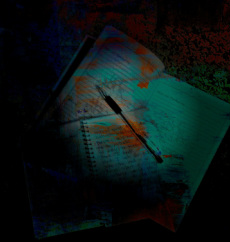|
Ever notice that some slam poems just dazzle so brightly above the rest - but you can't put your finger on exactly what stood out?
Chances are, if you heard someone deliver a spoken word piece that was just killing it, and that poem is sticking with you for days to come, it was probably littered with the right balance of poetic devices that helped surface the strong points. When writing slam poetry, using literary and poetic devices tactically and tastefully can be tricky - use too much and you drown your emphasis; too little and your poem has no flair. In many cases, trial and error is the best way to know what helps or hinders your delivery. The best poetic devices are the ones that make your words sound the way you want to make someone feel. Tough concept to grasp, I know - but with some practice you'll nail it! If you're looking for ways to give your poem a pulse, to really set fire to the stage and put a riveting piece of knowledge out to the audience, then try tinkering with some of these poetic devices. 10 poetic devices to use in your slam poetry - and how to use them!1. Repetition
Repetition can be used for full verses, single lines or even just a single word or sound. The ultimate goal is to make something 'stick' better. If there's a main point you're conveying, or a message you want to resonate, try adding some form of repetition to see if you can make it stand out more. Repetition is a good aid to helping others understand the theme of your poem as well - especially in instances where other tools and imagery can actually hide the story behind your words.
Further to the emphasis of a specific sound or point, remember that slam poetry is also known as spoken word. SPOKEN! And when you speak it, you do it on stage. And when you perform on stage, you should have your poem memorized. Sooooo, back to repetition - yes, you got it - it helps you memorize your poem! I used a couple instances of repetition in Daddy's Little Girl. But if you want to hear it from a true authority, check out Marc Kelly Smith in Kiss It.
|
|



